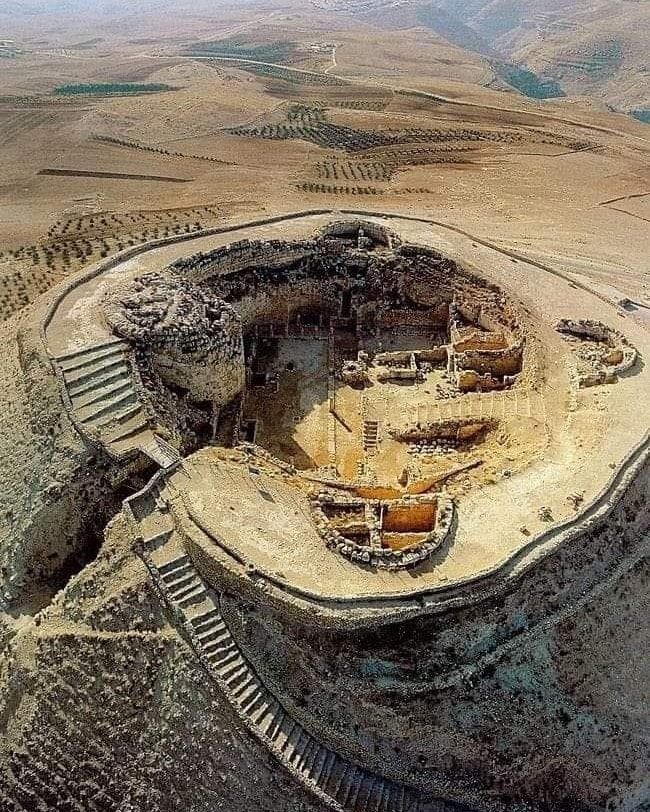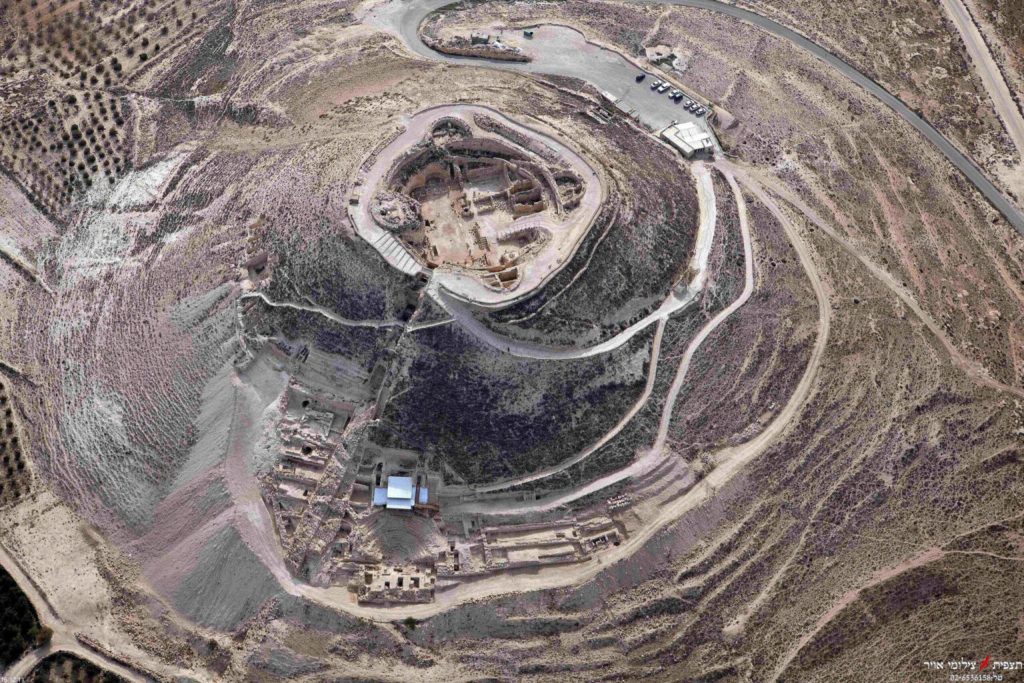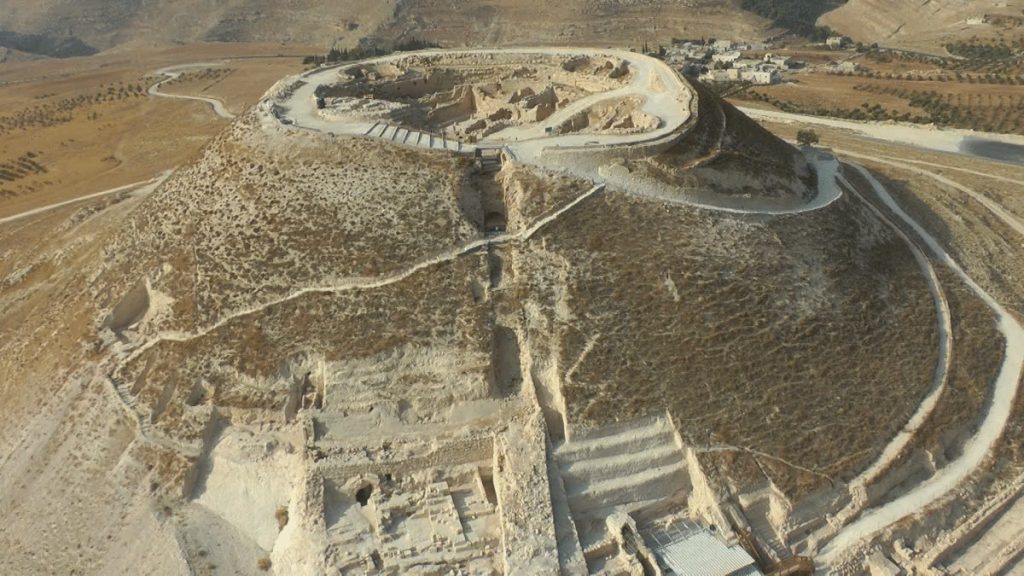Nestled in the heart of the Judean Desert near Bethlehem, Israel, lies Herodium, a magnificent architectural marvel commissioned by King Herod the Great. This extraordinary fortress-palace, built between 23 and 15 BCE, is not only a testament to the king’s engineering brilliance but also serves as a window into the grandeur and opulence of his reign. Herodium’s dual purpose as a luxurious royal residence and an eternal resting place cements its significance in history as both an architectural masterpiece and a symbol of Herod’s enduring legacy.
Visitors to Herodium are immediately struck by the sheer scale and sophistication of the ruins, which vividly illustrate the splendor of the Herodian period. The complex boasts luxurious living quarters adorned with intricate designs, showcasing Herod’s penchant for opulence and comfort. Sophisticated bathhouses, complete with advanced heating systems, provide a glimpse into the innovative architectural techniques employed during this era. These features reflect the lavish lifestyle that King Herod demanded for himself and his court, solidifying Herodium’s reputation as a site of unparalleled grandeur.

Among the ruins, the crowning jewel of Herodium is the circular tomb that Herod himself meticulously designed as a lasting monument to his legacy. This distinctive feature not only highlights his architectural ingenuity but also underscores his desire for immortality through monumental construction. The tomb’s intricate design and strategic placement within the complex emphasize its importance, serving as a centerpiece that draws visitors from around the world. The care and precision with which the tomb was constructed offer insights into Herod’s ambition and the lengths he went to immortalize his reign.
Perched atop a hill, Herodium commands breathtaking views of the surrounding Judean Desert and the distant city of Jerusalem. Its strategic location underscores its significance as both a defensive stronghold and a surveillance point. The site’s architecture seamlessly blends practicality with luxury, embodying the duality of Herod’s vision. The fortress was designed to withstand potential sieges, with its robust walls and ingenious water supply systems ensuring its resilience. At the same time, its palatial elements reflect the grandeur befitting a king, creating a harmonious balance between function and aesthetic brilliance.
Herodium’s strategic design also served as a powerful symbol of Herod’s authority and control over the region. By constructing this imposing structure, he not only demonstrated his ability to command resources and labor but also reinforced his dominance over the Judean landscape. The fortress’s commanding presence served as a constant reminder of Herod’s power, both to his subjects and to potential adversaries. This dual role as a royal residence and a military outpost exemplifies the complexity of Herod’s rule, characterized by both grandeur and pragmatism.
In modern times, Herodium has emerged as a site of immense archaeological significance, offering valuable insights into ancient civilization and the architectural prowess of the Herodian era. Excavations have revealed a wealth of artifacts and structures, shedding light on the daily lives of those who inhabited the complex. These discoveries have provided researchers with a deeper understanding of the cultural, political, and technological aspects of the period, enriching our knowledge of ancient history.
One of the most remarkable aspects of Herodium’s archaeological significance is its ability to bridge the gap between the past and the present. Visitors to the site are transported back in time, walking among the ruins and experiencing firsthand the magnificence that characterized King Herod’s reign. The preservation of Herodium’s structures and artifacts allows modern audiences to connect with history in a tangible way, fostering a deeper appreciation for the ingenuity and ambition of ancient civilizations.

The excavation of Herodium has also brought to light the challenges and triumphs of archaeological exploration. The site’s complex history and unique features have posed significant challenges for researchers, requiring innovative approaches and advanced techniques to uncover its secrets. Despite these difficulties, the discoveries at Herodium have been nothing short of extraordinary, revealing a treasure trove of information about the Herodian period and its enduring impact on the region.
Among the notable findings at Herodium are the remnants of its sophisticated water supply system, which highlight the engineering ingenuity of the time. The complex network of aqueducts and cisterns ensured a steady supply of water to the fortress, even in the arid conditions of the Judean Desert. This remarkable feat of engineering not only underscores Herod’s commitment to luxury but also demonstrates his ability to overcome the challenges posed by the harsh environment. The preservation of these systems offers valuable insights into the technological advancements of the period and their role in shaping the region’s development.
Another significant discovery at Herodium is the remains of its grand reception halls and banquet rooms, which provide a glimpse into the social and political dynamics of Herod’s court. These spaces were designed to host lavish gatherings and entertain distinguished guests, reflecting the king’s desire to project power and sophistication. The intricate decorations and elaborate architectural features of these rooms highlight the cultural influences that shaped Herod’s reign, blending elements of Roman, Hellenistic, and local traditions to create a unique and distinctive style.

The site’s preservation and ongoing excavation efforts have also highlighted the importance of Herodium as a cultural and historical treasure. The work of archaeologists and historians has not only uncovered the physical remnants of the fortress but also brought to life the stories and achievements of those who built and inhabited it. These efforts have enriched our understanding of the Herodian period and its broader historical context, ensuring that Herodium’s legacy continues to inspire and educate future generations.
Herodium’s enduring significance extends beyond its historical and archaeological value. As a symbol of Herod’s ambition and ingenuity, the site serves as a reminder of the transformative power of vision and determination. The fortress stands as a testament to the enduring impact of human creativity and innovation, inspiring awe and admiration in all who visit. Its legacy continues to captivate the imagination, offering a glimpse into the grandeur and complexity of ancient civilizations.

For modern visitors, Herodium offers a unique opportunity to explore the intersection of history, architecture, and culture. The site’s well-preserved ruins and breathtaking views provide a truly immersive experience, allowing visitors to connect with the past in a meaningful and personal way. Whether walking through the remains of the royal palace, marveling at the engineering feats of the water supply system, or standing in awe of the circular tomb, visitors are transported to a world of unparalleled splendor and ambition.
Herodium’s appeal also lies in its ability to evoke a sense of wonder and curiosity. The site’s rich history and intricate design invite exploration and discovery, encouraging visitors to delve deeper into the stories and achievements of the Herodian period. This sense of connection and engagement is a testament to the enduring power of Herodium’s legacy, which continues to inspire and educate audiences from around the world.

In conclusion, Herodium stands as a shining example of King Herod the Great’s architectural brilliance and visionary leadership. Its dual role as a luxurious royal residence and a formidable defensive stronghold reflects the complexity and grandeur of Herod’s reign, while its enduring significance as an archaeological site highlights its importance in understanding ancient history. As a symbol of human creativity and ambition, Herodium continues to captivate and inspire, offering a window into the magnificence and ingenuity of the past. For those who visit, it is not only a journey through history but also a celebration of the enduring impact of vision and determination.





